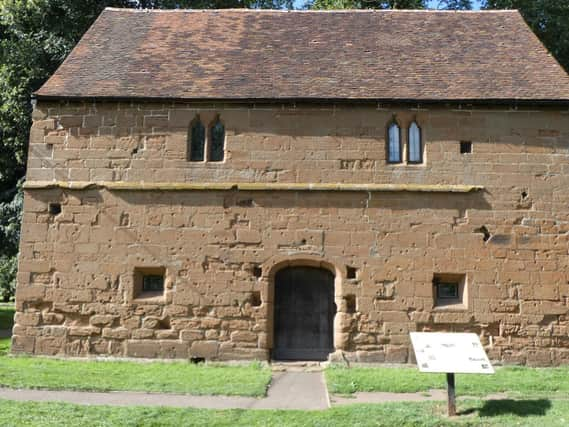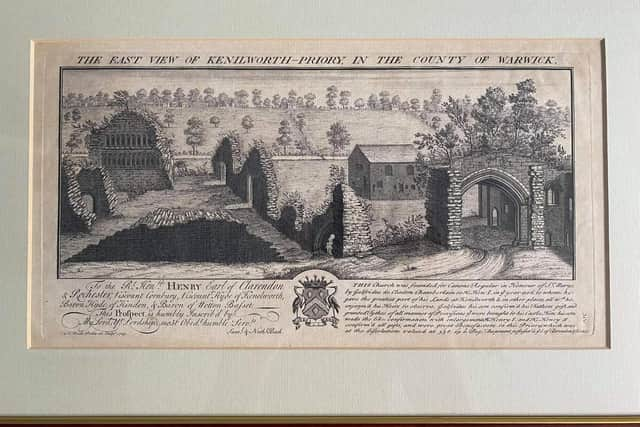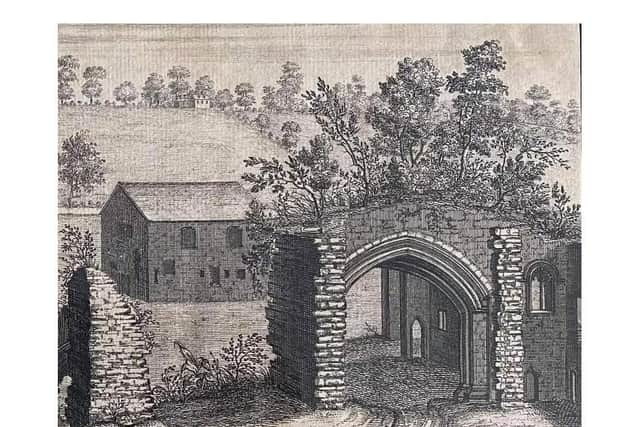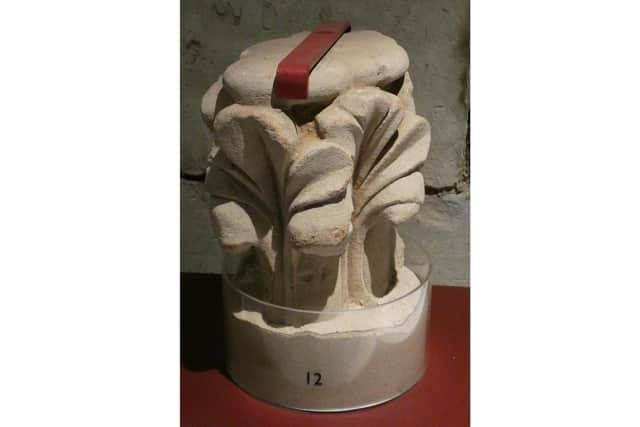Forgotten Local Histories: Kenilworth's historic 'Barn' bears the scars of history that can still be seen today


George Evans-Hulme is an academically trained historian and researcher for the Kenilworth History and Archaeology Society. Over the next few weeks he will be looking at sites or buildings with local historic significance. This week he writes the second part of his two-part story about Kenilworth Abbey.
Forgotten Local Histories – Kenilworth Abbey (Part II):
Kenilworth, compared to many provincial towns, has an incredibly rich and varied heritage. The most visible remains of this rich heritage are the castle and the abbey, although both now in a ruinous state. Two buildings of the abbey, however, can still be seen, largely intact, today. It is these two structures, the gatehouse and a building known locally as ‘the Barn’ (a misleading name, as we will see below), that will form the focus of this week’s article.


Advertisement
Hide AdAdvertisement
Hide AdThe 14th century gatehouse stands on the mid-westerly edge of St Nicholas’ churchyard. Built of sandstone, it was originally two storeys high. On the ground floor, it is still possible to make out the remains of the two roomed porter’s lodge, including the remnants of two fireplaces and two latrines (one each per floor).
The more recent history of the gatehouse has involved efforts by the Harry Sunley Memorial Project, (established following the death of Harry Sunley FSA, former chairman of the Kenilworth Abbey Advisory Committee and the authority on the history of the abbey) to restore the porter’s lodge and make it accessible to the public as exhibition space to display some of the larger items that tell the story of the abbey (including a 14th century, life-size effigy of one of the abbey canons).
Before this can happen, however, the Harry Sunley Memorial Project needs additional support from local residents and perhaps others from further afield. More information about the project can be obtained by contacting the Kenilworth History and Archaeology Society using the email at the end of this article or by enquiring in person at the Abbey Museum situated in the building, known locally as ‘the Barn’, just north of the Abbey Fields playground.
The name ‘the Barn’ is a misnomer as there is little to no evidence to suggest that the building (which is two storeys high, made of red sandstone and built in the 14th century) was ever used as a barn whilst the abbey was still standing. Indeed, the name seems to originate from the addition of a cowshed to the east face of the building at the turn of the 20th century, so it is inaccurate to call it a ‘monastic barn’.


Advertisement
Hide AdAdvertisement
Hide AdThe local name also does a disservice to the history of the building. Whilst the original purpose remains unknown several educated hypotheses have been made, one of which is that the building was a stone mason’s workshop.
It has been suggested that ‘the Barn’ was a backdrop to a skirmish between the Royalist garrison of Kenilworth Castle and the advancing Parliamentarian army in 1642, during the Civil War. This may seem a little extraordinary, but the building is peppered with indentations seemingly caused by musket balls which, otherwise, remain largely unexplained.
Another intriguing feature of the building is the masons’ marks left behind by the stonemasons who carved the building’s stone blocks over 700 years ago. The marks were used to demonstrate the output of each mason, which was particularly important when it came to calculating how much each should be paid.
There are as many as 39 different masons’ marks dotted on every face and floor of the building, inside and out, and it is not an insignificant challenge (for either children or adults!) to try to see if one can spot them all.


Advertisement
Hide AdAdvertisement
Hide Ad‘The Barn’ building now contains the Abbey Museum. This is staffed by volunteers from the Kenilworth History and Archaeology Society and is open to visitors on Sundays and Bank Holiday Mondays (including Sunday and Monday August 29/30) between 2:30pm-4:30pm. Entry is free.
As well as having an interesting history, the Abbey Museum also exhibits many objects that further bring to life the history of the abbey and Kenilworth as a whole (including Roman pottery found in Kenilworth and a 5-foot-high facsimile of a 17th century map of the town, amongst many other items). If one is looking to immerse oneself in the rich variety of Kenilworth’s history, there is no better place to start.
Furthermore, the Kenilworth History and Archaeology Society will be hosting two guided tours of the abbey grounds and ruins on Saturday and Sunday September 11/12 at 3:00pm. These are also free to attend, but spaces are limited so visitors should register at the Abbey Museum from 2:30pm on the day of the tour.
For more information on either the Abbey Museum or the guided tour of the abbey ruins, please enquire in person at the museum or email: [email protected]
Advertisement
Hide AdAdvertisement
Hide AdAuthor’s Note: My thanks to Jan Cooper and Norman Stevens for their help in my research for this article. My thanks also to Matthew Bunting for his kind permission to print a detail from his eighteenth century engraving of the abbey. Any errors in this piece are my own.